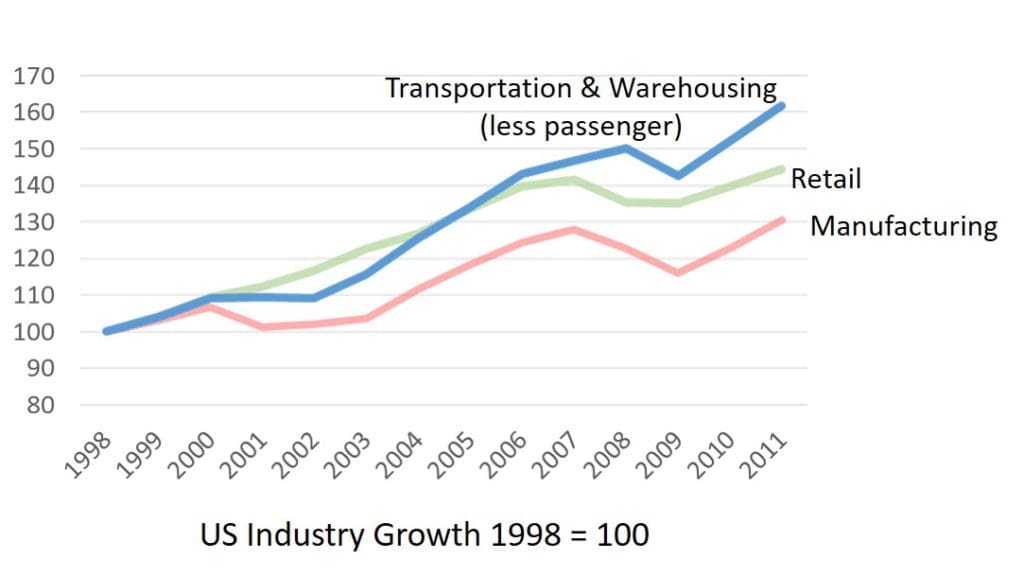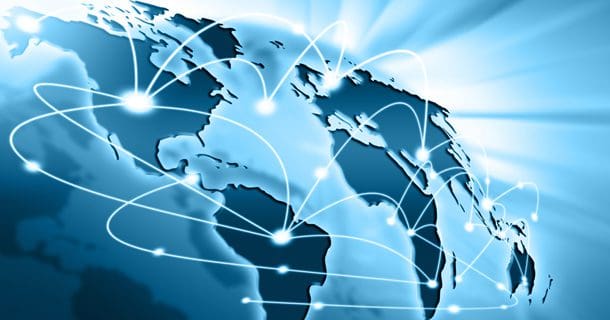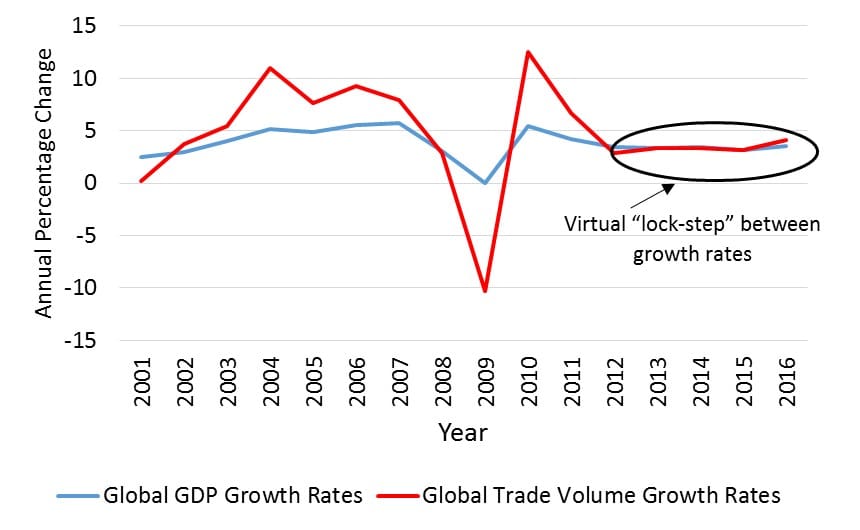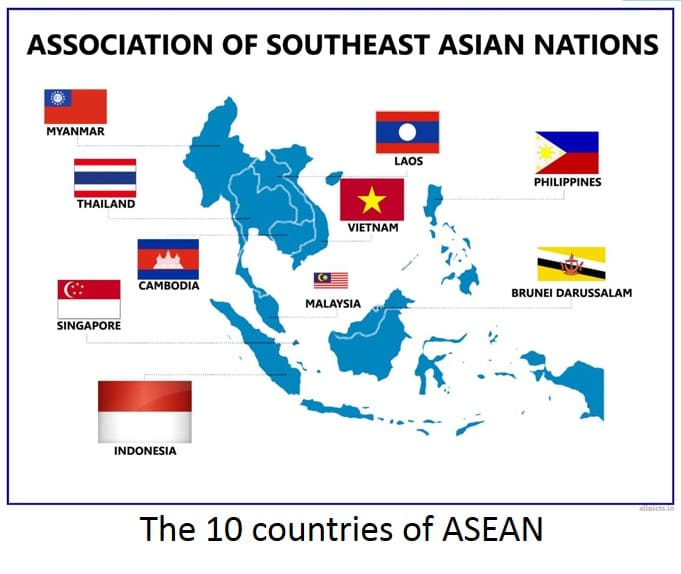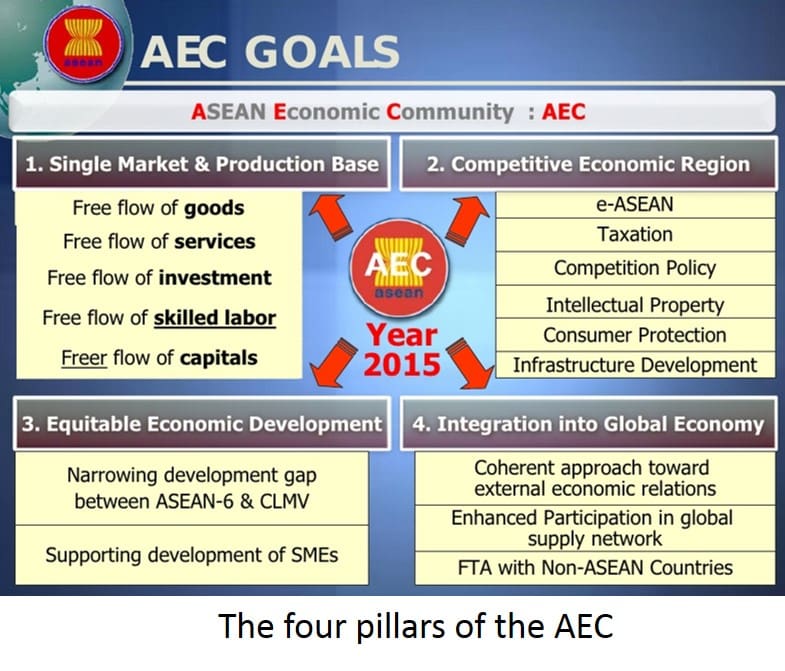 The political environment and public policy decisions are central determinants of global trade patterns. But political risk seems especially heightened in today’s international business environment. From the Brexit vote, to Trump’s trade renegotiation rhetoric, to Marine Le Pen’s promise of intelligent protectionism, there has been an undeniable trend of political intent to reexamine trade policies and free trade agreements.
The political environment and public policy decisions are central determinants of global trade patterns. But political risk seems especially heightened in today’s international business environment. From the Brexit vote, to Trump’s trade renegotiation rhetoric, to Marine Le Pen’s promise of intelligent protectionism, there has been an undeniable trend of political intent to reexamine trade policies and free trade agreements.
I am in the process of updating ARC’s Global Trade Management (GTM) market study and have engaged in several discussions about today’s political environment and its impact on global trade and GTM solutions. Of course, political rhetoric accounts for much of what has already occurred. But the recent election results in the UK and US reinforce the view that substantive change may be forthcoming. And the political rhetoric also seems to have a way of feeding on itself. Executives understand that public policy, especially trade policy, can have substantial impact on their supply chains. Although existing trade policies have not yet changed from these political events, corporate executives want to be informed about the impact potential changes will have on their business, and prepared to quickly adapt their supply chains to function optimally in the new trade environment. From my discussions with GTM suppliers, I see corporations focusing their preparations on two main areas, namely:
External Corporate Environment: The specific political changes and the potential trade impact of these changes on the supply chain.
Internal Corporate Environment: The company’s internal processes and its ability to adjust to the changing trade environment.
External Corporate Environment
The proliferation of free trade agreements over the last couple decades has increased the degree to which preferential treatment of certain goods has shaped supply chains. Ty Bordner of Amber Road puts the number of trade agreements currently in effect across the world at about 600. And the effect of these agreements on supply chain decisions should not be overlooked, as duties and tariffs are substantial enough to redirect sourcing and even production decisions. Rainer Roll of MIC Customs Solutions explained a case to me where a manufacturer estimated that roughly half the cost of a production facility upgrade was going to be financed by duties savings made possible by a free trade agreement. In fact, many companies incorporate duties and tax costs right down through the bill of materials when analyzing various production and sourcing decisions. And it’s not just the GTM vendors stating the relevance of duties in strategic decision making. Toby Brzoznowski of Llamasoft, a leading provider and supply chain design solutions, confirmed in his post Leveraging Supply Chain Design to Thrive in Uncertain Times that taxes and duties are critical inputs into supply chain network design by impacting overall costs, sourcing decisions and manufacturing strategies.
In contrast, the more recent political environment has created uncertainty about existing trade policies, especially free trade agreements. Voters in many nations believe that trade agreements are detrimental to their economic well-being. They often focus on the displacement of a subset of workers, rather than the widespread efficiencies brought about from increased competition and specialization. Linda McKee from SAP’s Global Trade Services team told me that the sudden change in public perception about free trade agreements has caused some executives to become more cautious about the long-term stability of the agreements. Long-term stability may not be a prerequisite for transactional sourcing decisions, but it is essential for supply chain partnerships and capital investment decisions.
The Brexit vote has occurred, but there is still a lot of uncertainty about the specifics regarding the unwinding of the UK in the European Union (EU), including the terms of trade. Although there is still much uncertainty, companies are beginning to evaluate their exposure to trade agreement changes from UK’s planned withdrawal from the EU. Rainer Roll of MIC Customs Solutions stated that companies are analyzing various scenarios to determine the potential effects on their business, both the risks and opportunities. For example, what are the effects of moving production from continental Europe to the UK to support UK demand – and vice versa, the effect of moving production currently in the UK to continental Europe? Companies are analyzing country of origin information and conducting total landed cost analysis so that they are well informed and ready to act when the trade environment does change. In North America, concerns about changes in NAFTA aren’t as acute, but corporate executives are beginning to ask questions about the potential impacts of changes to NAFTA. Chris Jones of Descartes informed me that corporate boards are looking to understand the cost implications of changes to NAFTA and the feasibility of nearshoring operations that are currently in Mexico or Canada. Similarly, Patrick Maley of BluJay Solutions noted interest in determining what the Trump administration can do through regulation and what changes would need Congressional approval.
My overall takeaway is that companies are mostly evaluating these political scenarios from a risk analysis and contingency planning perspective. However, they are doing so with an eye on being prepared and able to act intelligently, competitively, and quickly once the changes do go into effect.
Internal Corporate Environment
Evaluating internal processes and capabilities is part of what companies are doing to make sure they are prepared to act in an uncertain, fluid environment. Companies are evaluating their ability to analyze the numerous potential scenarios and want to make sure they have the required information to determine the duties and rules associated with country of origin for raw and intermediate materials and the necessary data to conduct a total landed cost analysis. This environment reinforces the need for the data and a structured, systematic way of analyzing the cost drivers and supply chain contingencies if the environment does change. At the same time, companies want to make sure that their GTM software providers can handle upcoming changes. For example, there is concern about the existing UK customs system (CHIEF) being retired and replaced with a new system in tandem with the UK’s withdrawal from the EU. Descartes and SAP both mentioned that companies are concerned about the concurrent system and regulatory changes. But the GTM vendors can easily handle these changes. The concern is more with the fluidity of the rules surrounding imports and exports from the UK and whether there will be sufficient notice before implementation of the new rules and the replacement customs system.
Overall, the global trade environment is expected to become more complex. The UK will have to renegotiate trade terms with countries outside of the EU and with those countries within the EU. The Trump administration is looking to establish numerous bilateral agreements instead of one multilateral agreement with Transpacific nations, and other elections such as last weekend’s election in France provoke additional uncertainty about international trade. GTM vendors believe that the increased complexity is stimulating additional demand for their products, as companies look to more formally manage their planning and execution of international trade and customs compliance.
















